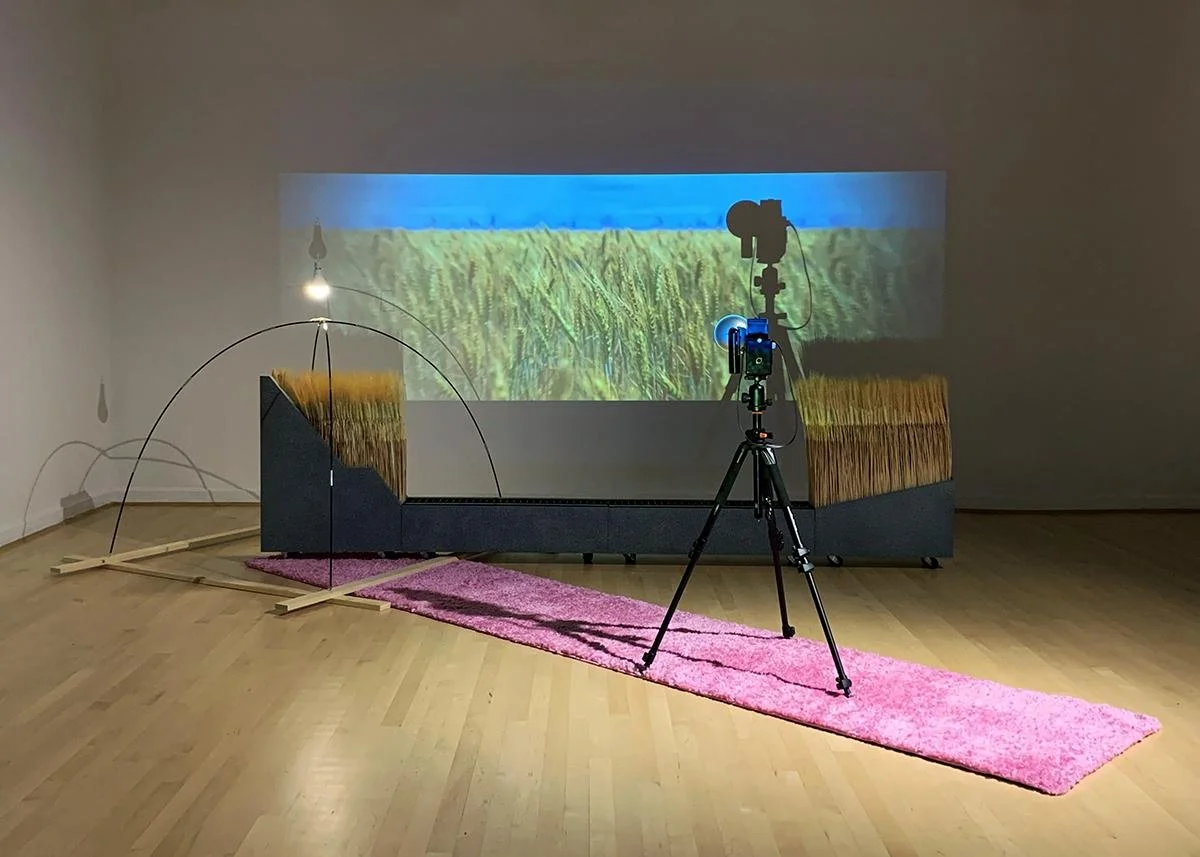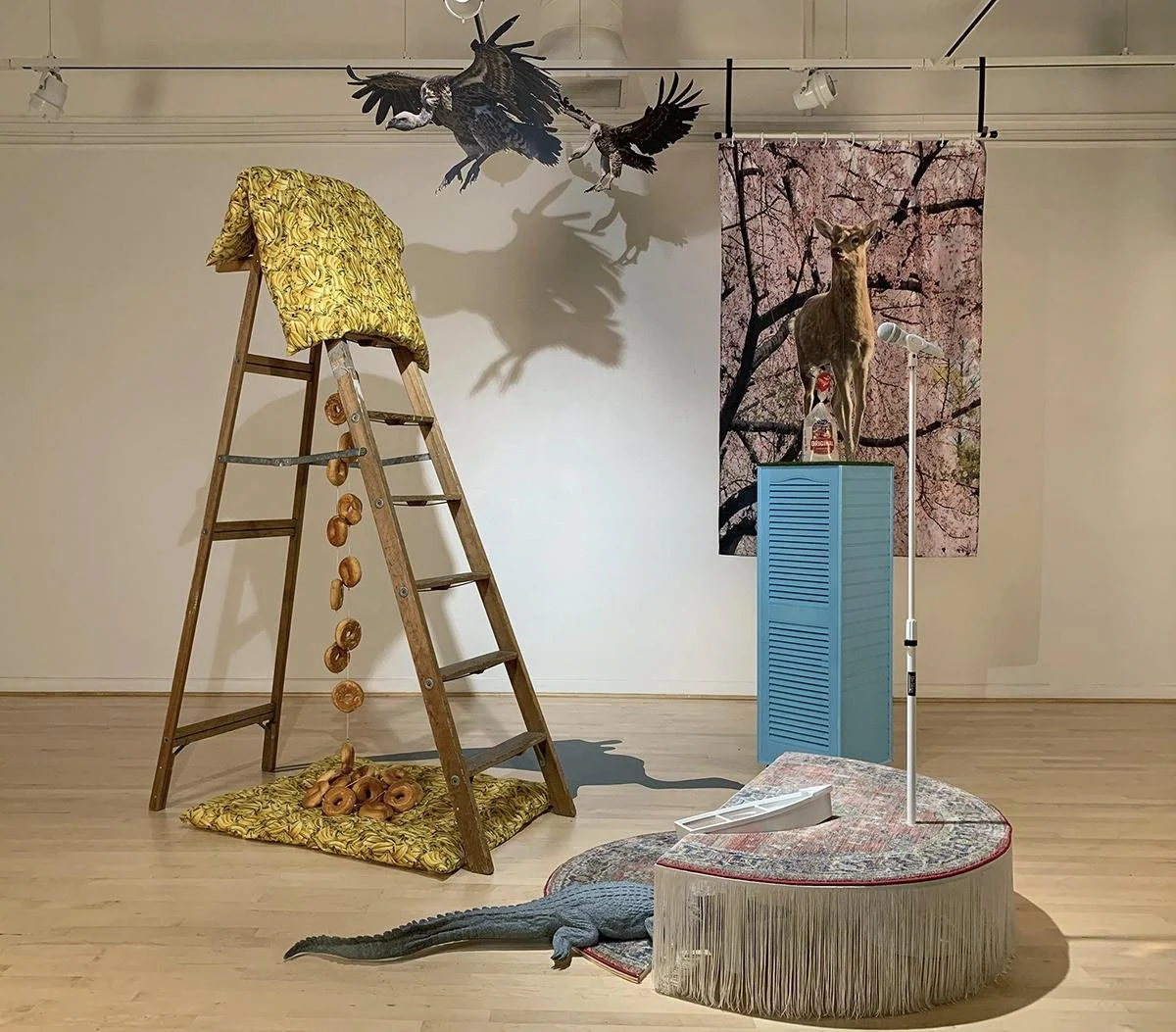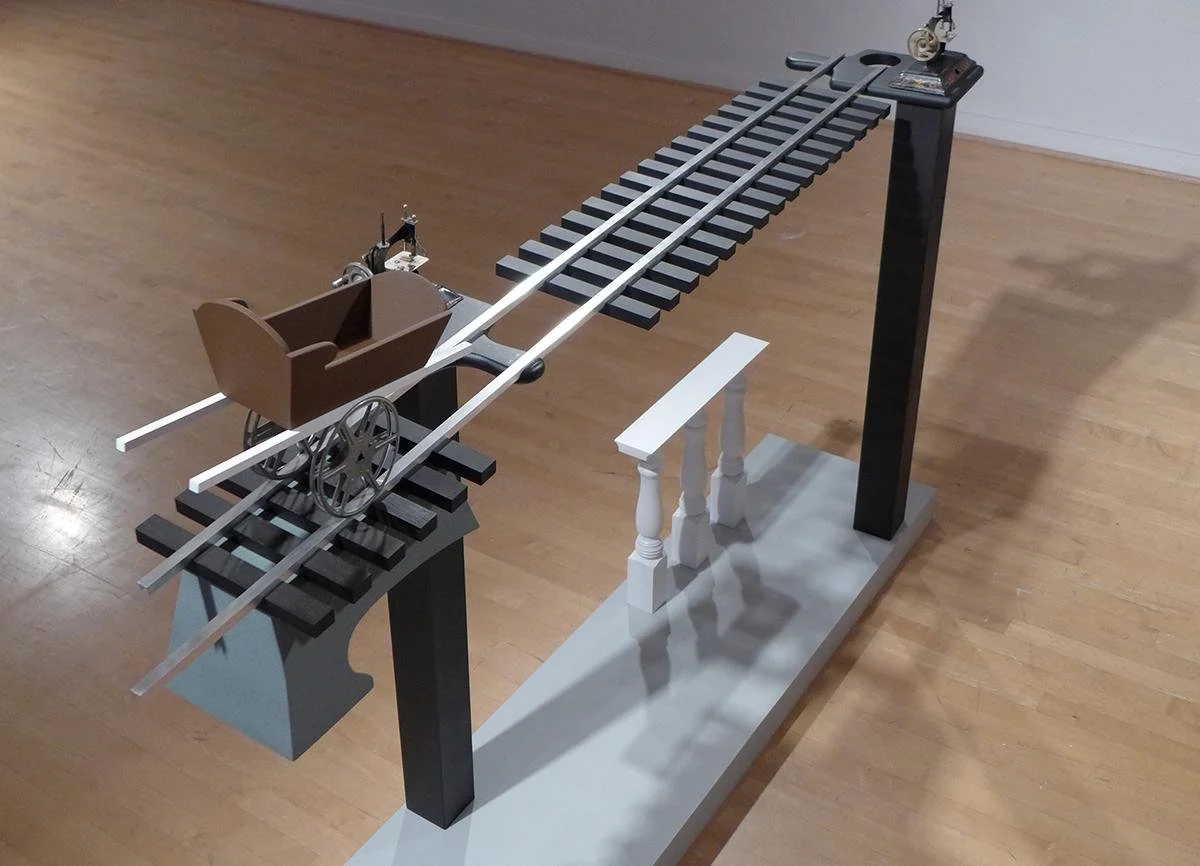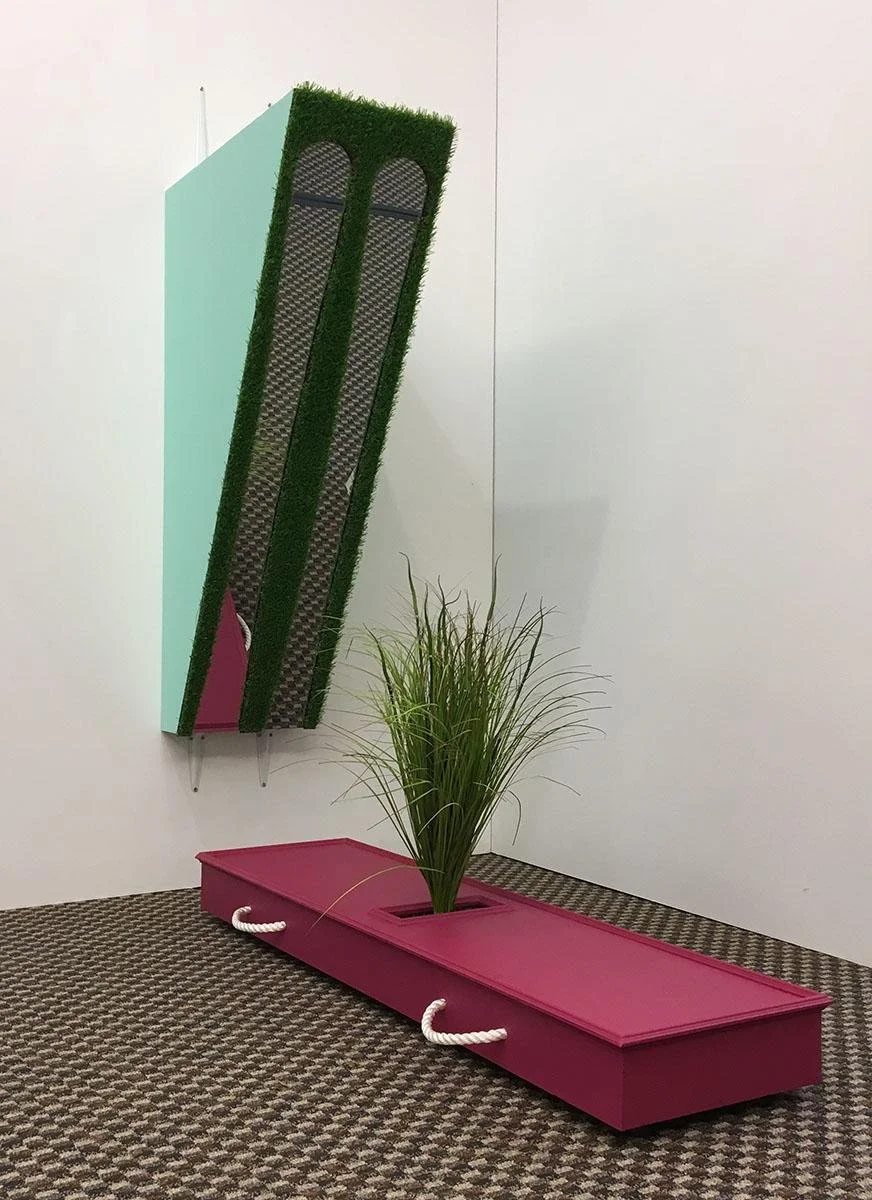Sung Eun Park
Still Life, 2021. Mixed media. Dimensions variable.
BIO
Sung Eun Park is an artist working across the mediums of drawing, sculpture, and painting. In her current body of work, Park has been exploring life and death. Her ongoing series of works have been investigations into a “good death”, the reflection on our mortality, and the intensity of this inevitable shadow that forces us to accept the prospect of death—an acceptance that impacts the way we lead our lives. In each work, Park weaves a narrative that allows the viewers to journey through a surreal world, a trip that will compel them to stay immersed in the present, free themselves from the past and the future, and contemplate the dignity and value of their lives. Born in Seoul, South Korea, Park migrated to the United States. She received her BFA from the Maryland Institute, College of Art and an MFA from Indiana University Bloomington. Her work has appeared in print and exhibitions, such as Vox Populi, Wassaic Summer Exhibition, and CICA Museum. She has been an artist-in-residence at the studios at Wassaic Project, the Vermont Studio Center, and others. She is currently living and working in Oregon.
ARTIST STATEMENT
I have been exploring the phenomena of life and death for the past few years. My current body of work records the various methodology that I have devised which explore human attitude towards death, including the value of death and the relationship between the existing funeral practices and the procedure for postmortem. The COVID-19 pandemic has renewed interest in researching the end of our life’s journey. “What could be defined as a ‘Good’ death is one of the questions being contemplated as the pandemic has altered our perception of death itself.” The situation we find ourselves in demands a reexamination of our understanding of death, which can be facilitated by reflecting on my past research. Given that life and death are inseparable and are to be viewed as the two sides of the same coin, the proposed research attempts to investigate the final moments of life. It seeks to examine the value of life by juxtaposing it with the moment it comes to an end. This postulate will be unraveled through the narratives that will constitute this research.
Interview with Sung Eun Park
The Bridge of Hesitation, 2020. Mixed media. Dimensions variable.
Can you tell us a bit about your background and how you became interested in becoming an artist? Who or what were some of your most important early influences?
Rather than deliberately thinking that I should become an artist, I think it came naturally to me. I have always enjoyed drawing since childhood. I was born as an only child and spent a lot of time alone. I particularly liked to draw houses when I was little. Whenever I visited someone's house with my mother, I would always sketch their space. I was fascinated by not necessarily the architecture or outside structure but the interior and living space with the absence of figures or even the stairs leading up to the house. I've forgotten those memories back then, but looking at the imagery of my recent work, I remembered the moment of capturing scenes of everyday life in Seoul, South Korea where I grew up.
Where are you currently based and what initially attracted you to working in this place? Are there any aspects of this specific location or community that have inspired aspects of your work?
I currently live and work in Monmouth, Oregon. I came here simply for work. Although the environment did not directly nourish the work I have done, living here for the past 10 years has allowed me to meditate on the process and system for my future work. It is not a glamorous city life, but the terrain is beautiful, and people here are much more relaxed. In such an environment, I found time to fully focus on myself. It was a time to think more deeply about the direction of work or the refinement of ideas through various trials and experiences.
Can you describe your studio space? What are some of the most crucial aspects of a studio that make it functional? Do any of these specific aspects directly affect your work?
I don't have my own studio. All work has been produced in the studio at the institution where I currently work. There is no difficulty in the work process since the necessary facilities and equipment are provided. There is also the advantage of being able to use time more efficiently in balancing between teaching and doing my own work because the two working places overlap. However, if there is a personal regret, it is the desire to have a space where I can leave a record (documentation of each piece) after temporary installation so that I can check in advance since the finished image cannot be seen until it is fully installed due to the nature of the work.
Modern Death Landscape, 2019. Mixed media. Dimensions variable
What is a typical day like? If you don’t have a typical day, what is an ideal day?
I live in an area where it rains a lot, but if it doesn't rain, I always go for a walk with my mother after work. She is my best friend, the only human being with whom I can share every facet of my life. I feel the most comfortable and happiest when I take a walk in the neighborhood and talk about various things regardless of the topic. While talking and walking, I can feel the change of seasons, find ideas for my pieces, and reflect on myself. Above all, I think the greatest luck is being able to spend a lot of time with my parents.
What gets you in a creative mindset?
New experiences about unfamiliar environments through walking and travel always seem to stimulate me.
What criteria do you follow for selecting materials? How long have you worked with this particular media or method?
I work with various materials, depending on the subject. Structural parts are mainly built using neutral material such as wood or metal and fabricated with objects found in everyday life to create pieces. Objects that cannot be seen now are found through research, vintage shops, or from my own collection of objects. Those objects serve as a link (bridge) to communicate with the audience, allowing them to jog their memories and strike up a conversation.
Can you walk us through your overall process? How long has this approach been a part of your practice?
I have been working on the same topic (My ongoing series of works have been investigations into a “good death”, the reflection on our mortality, and the intensity of this inevitable shadow that forces us to accept the prospect of death—an acceptance that impacts the way we lead our lives) for the past 6 years, but the beginning and process of each project are not always the same. Once a title or theme is chosen, either the overall structure is designed using the narrative, and the details are determined accordingly or a significant object is identified first, and starting from it, an overall structure is created using a narrative and collected images that fit the topic. Since the most important thing is to convey the idea of the work, the story always serves as an important medium. The premise structure or image is made up of narratives and many sketches.
Happy Funeral #3, 2016. Mixed media. 72 x 24 x 48 inches.
Do you pursue any collaborations, projects, or careers in addition to your studio practice? If so, can you tell us more about those projects, and are there connections between your studio practice and these endeavors?
I want to create an exuberant and more dynamic image by inserting or incorporating new technologies, such as moving images or mechanical objects. For now, I am planning to focus on improving my practical skills. I have honed them to make them my own tools and am searching for engineers or writers who can collaborate on the technical side.
As a result of the pandemic, many artists have experienced limited access to their studios or loss of exhibitions, income, or other opportunities. Has your way of working (or not working) shifted significantly during this time? Are there unexpected insights or particular challenges you’ve experienced?
Although it was not easy to work in a limited environment and situation, it gave me time to focus on developing a body of work and offered an opportunity to reorganize and think about my approach to work and the direction I should move forward. I had more time to research and study more deeply about the topic. If the focus has been on death or the end of a journey within the subject of life and death ever since I've started to work on the ongoing series, I started to contemplate and consider more about the positive aspects of the value of our present life due to the inescapable reality of it coming to an end.
Can you share some of your recent influences? Are there specific works—from visual art, literature, film, or music—that are important to you?
Hearing the rhythmic sound of musical instruments playing somewhere, an old man suddenly realizes that it is the last day to experience his first love's final moment. It is a perfect ceremony for not only the dead but also everyone in that small village. The man dresses for the funeral of the woman, who has died at the age of 99. It is a peaceful death of a person who lived a full life, which occasions a "happy funeral." These scenes of the funeral in "Village of the Watermills" from Akira Kurosawa's collection of short films "Dreams” (1990) are what greatly spiked my interest to explore the idea of a "good death."
Pause #2, 2019. Mixed media. 48 x 12 x 60 inches.
Who are some contemporary artists you’re excited about? What are the best exhibitions you’ve seen in recent memory and why do they stand out?
I like Do-ho Suh’s work. His works have been exhibited in many art museums and galleries internationally; many people probably know and have seen his works. In 2003, I saw one of his pieces called, Seoul Home/L.A. Home/New York Home/Baltimore Home/London Home/Seattle Home (1999) for the first time at the Baltimore Museum of Art, and I was overwhelmed by its scale and color and the flow of the beautiful sheer fabric. I was impressed by how the traditional Korean house was recognized in another culture, the unique concept of being able to fold it up and pack it in a suitcase to be carried at any time, the choice of materials for the light but rigid structure, and finally the labor that went into the piece. After that, I have seen his work in many places. The last I saw was in Basel, Miami in 2016. It was a drawing created/drawn with thread, which allowed me to consider parallelizing large-scale sculpture/installation and drawings.
Do you have any tips or advice that someone has shared with you that you have found particularly helpful?
I have recently been thinking a lot about the method of the work, whether it is one that someone has already done, how to make it my own original method and whether I should incorporate new technology according to the current flow. The advice that was offered during a conversation with an artist I met at the artist residency last October was that acquiring a new skill is to have another tool, and the idea will be conveyed through my work anyway, it is not just a matter of introducing such a skill or a tool. We talked about the importance of our own mode of expressing thoughts and ideas. This was an opportunity to release the pressure of accepting new technology and doing something with it. Instead, I thought I should take the time to hone my skills and develop my own tools. My current goal is to discover my own method through various trials with them.
What are you working on in the studio right now? What’s coming up next for you?
I am currently contemplating the next project. I will continue to work on the subject I have been working on so far, but I am going to try to do both installation and drawings—the central source of my work—at the same time. I don't know how it will be. Opening up all possibilities will produce different ideas to use new materials or methods.
To find out more about Sung Eun Park check her out on Instagram or on her website.
Pause, 2018. Mixed media. 36 x 36 x 48 inches.






